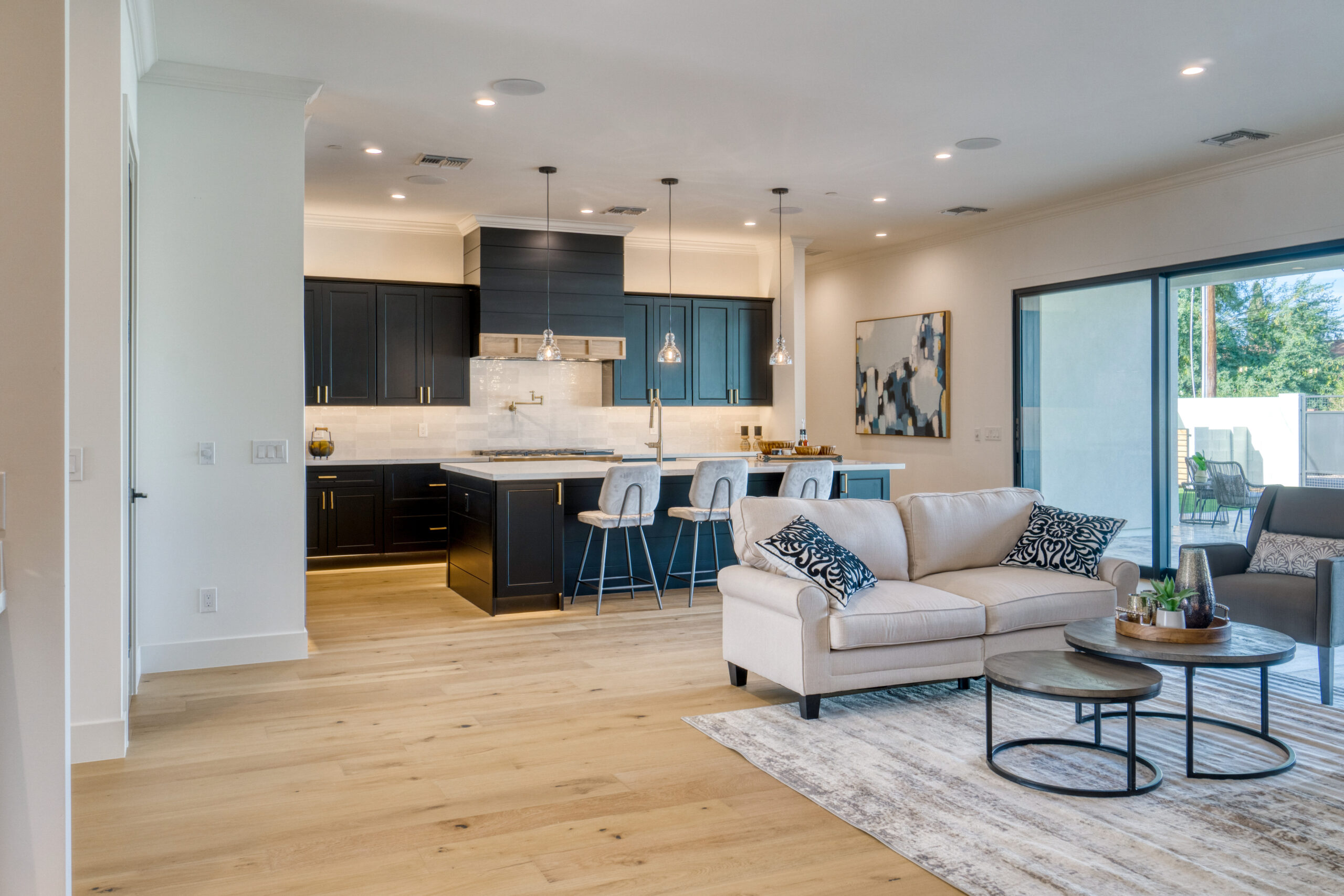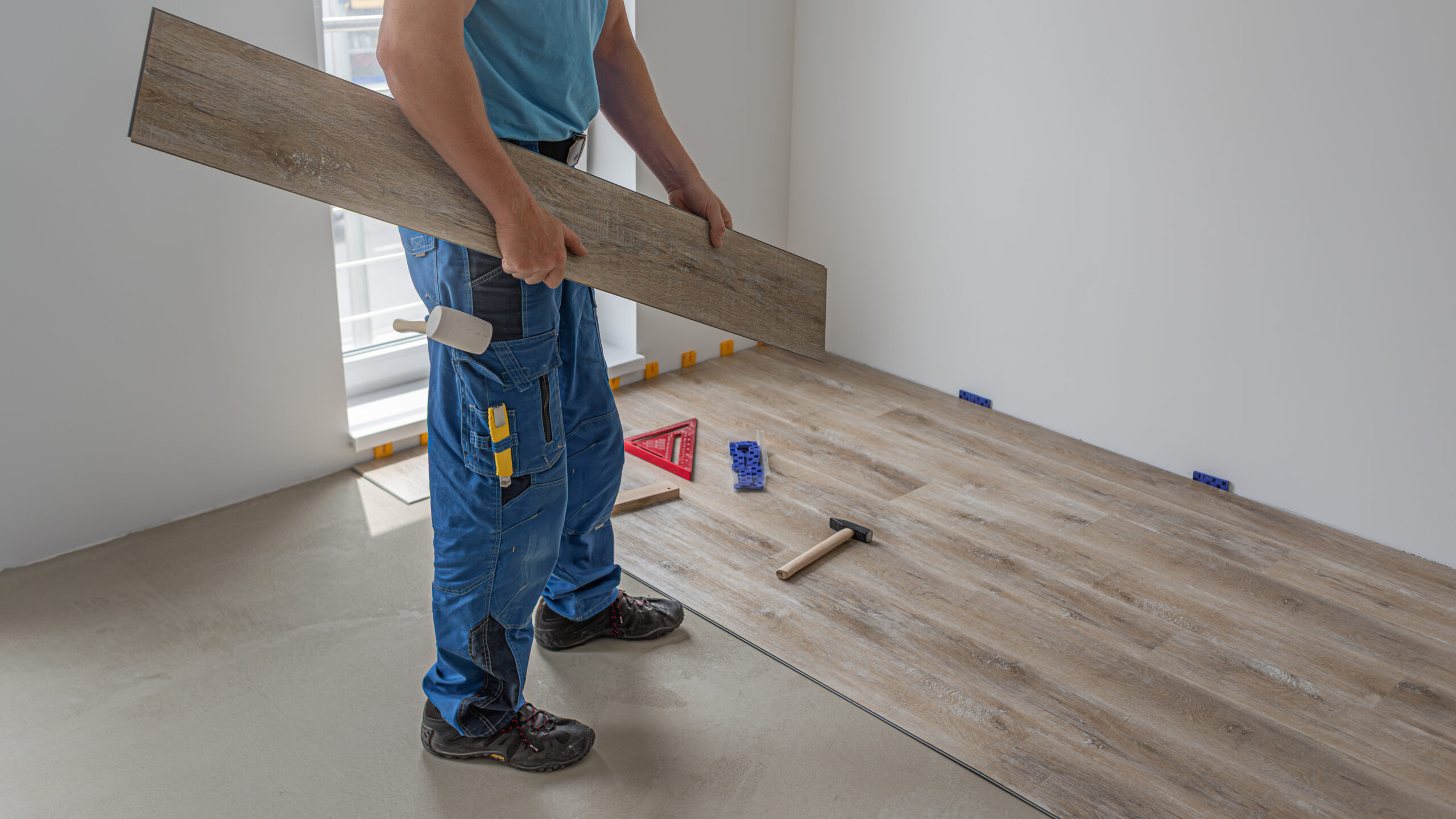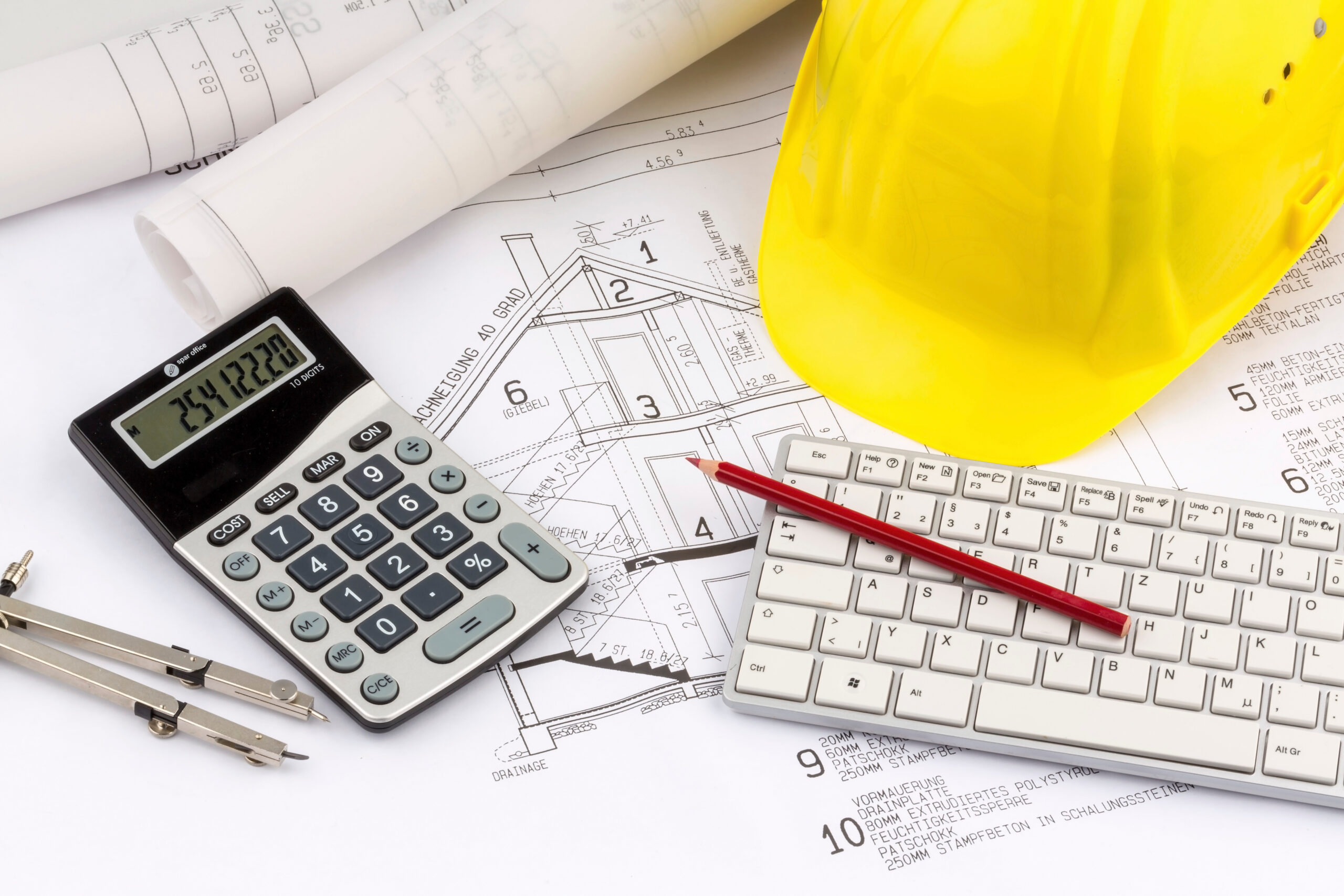How has casual living reshaped the way families design and use their homes? What role does casual living play in creating flexible, multi-functional spaces for busy households? Why is casual living just as important in affordable housing as it is in luxury properties?
Casual living has become more than just a design trend—it’s a response to the demands of modern family life. Gone are the days of pristine formal rooms reserved for special occasions. Instead, families are embracing open layouts, adaptable spaces, and approachable aesthetics that support everyday activities. From homework stations built into kitchen islands to performance fabrics that stand up to spills, casual living principles make homes functional, comfortable, and inviting.
At its core, casual living reflects deeper cultural shifts toward informality, connection, and adaptability. This design approach supports families through different life stages, accommodates remote work and technology, and fosters emotional well-being by reducing stress and encouraging togetherness. Whether in affordable housing or custom builds, casual living ensures every square foot of a home works hard to support the realities of contemporary life while still offering beauty and comfort.
Over the past couple of decades, I’ve witnessed a profound transformation in how Americans approach their living spaces. The formal parlors and separated dining rooms that once defined middle-class aspirations have given way to something far more practical and authentically livable. Today’s families are embracing casual living as not just a design preference, but as a necessity born from the realities of contemporary life.
The pace of modern family life has fundamentally altered our relationship with home. Between dual-career households, children’s packed activity schedules, and the increasing integration of remote work, families need homes that can simultaneously adapt, flex, and support multiple activities. This shift toward casual living represents more than just removing walls; it’s about creating spaces that prioritize functionality without sacrificing comfort or style.
What I find most compelling about this evolution is how it reflects broader cultural changes in American family life. The rise of informal, multi-use spaces over traditional formal rooms signals a departure from the compartmentalized living of previous generations. Where our parents might have maintained a pristine living room reserved for special occasions, today’s families want every square foot to earn its keep in supporting their daily lives.
The influence of casual living on home design extends far beyond aesthetics. It shapes everything from traffic flow and lighting considerations to storage solutions and material selections. As families spend more time together in shared spaces, the home must accommodate cooking, homework, entertainment, and relaxation, which often all happen simultaneously within the same open area.
This transformation has been particularly significant in the affordable housing sector, where maximizing both space and functionality becomes crucial. When square footage comes at a premium, casual living principles help create homes that feel larger and more versatile than their actual measurements might suggest. In this article, we’ll explore how the shift toward casual living is impacting home design from affordable housing to luxury properties.
Table of Contents:
Defining Casual Living in the Modern Context
Family-Centric Design Principles
The Emotional Impact of Casual Living Design
Defining Casual Living in the Modern Context
Like many industry professionals, I define casual living through three core characteristics that consistently appear in successful family-centered designs: flexibility, comfort, and functionality. These aren’t just buzzwords; they represent fundamental shifts in how we think about domestic space.
Flexibility manifests in areas that can easily transition between different uses throughout the day. A kitchen island that serves as a homework station, coffee bar, and cocktail prep area exemplifies this adaptability. Comfort prioritizes materials and furnishings that can withstand the wear and tear of daily family life while maintaining an inviting atmosphere. Functionality ensures that every design decision supports the practical needs of busy households.
Cultural and generational trends have accelerated this movement toward casual living. Millennials, a rapidly growing homebuying demographic, grew up in an era of increasing informality. They’re less interested in maintaining separate spaces for different activities and more focused on creating homes that support their integrated lifestyles. Generation X and even Baby Boomer empty nesters are following suit, preferring homes that feel approachable rather than precious.
Technology and remote work also play huge roles in this trend. With home offices becoming permanent fixtures rather than temporary pandemic accommodations, families need spaces that can seamlessly blend professional and personal activities. These days, it’s common to see homes where dining tables double as conference rooms, or where a living room corner transforms into a video call backdrop.
This technological integration has made casual living not just preferred but necessary. Smart home systems, wireless connectivity, and mobile devices allow families to maintain productivity and connectivity throughout their homes, removing the need for dedicated spaces for specific activities.
Family-Centric Design Principles
The foundation of successful casual living design lies in understanding how modern families actually use their homes. Open-concept floor plans have become the standard not because they’re trendy, but because they solve real problems for busy households.
Open-concept layouts facilitate easier interaction between family members engaged in different activities. Parents can prepare dinner while helping with homework, or host guests while keeping an eye on children playing nearby. This visual connectivity strengthens family bonds and creates a sense of togetherness even when individuals are pursuing separate activities.
Multi-functional spaces represent the practical application of casual living principles. In many modern homes, you’ll see kitchen islands that incorporate charging stations, homework areas, and casual dining spaces. Living rooms often feature storage ottomans that organize toys while providing extra seating for movie nights. These dual-purpose elements maximize utility without cluttering the visual field.
Safety and durability considerations become paramount when designing for active households. Many designers now specify performance fabrics that resist stains and wear, install rounded corners on countertops and furniture edges, and select flooring materials that can handle everything from muddy boots to spilled juice. The goal isn’t to create a childproof environment, but rather a child-resilient one that maintains its beauty despite heavy use.
The emphasis on safety extends to sight lines and supervision. Casual living design often eliminates blind spots, allowing parents to maintain a visual connection with children throughout the main living areas. This creates peace of mind while avoiding the fortress-like feel that overly child-focused design can sometimes produce.
Comfort-First Aesthetics
The aesthetic philosophy behind casual living prioritizes livability over showpiece perfection. This doesn’t mean compromising on beauty; rather, it means choosing beauty that can coexist with daily life.
Soft textures play a crucial role in creating inviting spaces that encourage relaxation and connection. I’m talking mostly about plush area rugs, comfortable throw pillows, and cozy blankets as both functional elements and visual anchors. These textile layers add warmth and softness to hard-surface materials while providing tactile comfort for family members of all ages.
Warm color palettes have also become essential in casual living design. Rather than the stark whites and cool grays that dominated earlier decades, today’s families prefer warmer, earth-toned palettes that create a grounding atmosphere. These colors photograph beautifully for social media while providing a calming backdrop for daily activities.
Natural light serves as both an aesthetic and practical element in casual family homes. Large windows, skylights, and glass doors not only reduce energy costs but also create the airy, spacious feeling that makes casual living successful. This often means window treatments that can provide privacy when needed while maximizing daylight during peak family activity times.
Furniture arrangement also plays a big role in creating relaxed environments. Rather than pushing all seating against walls in formal arrangements, casual living spaces feature furniture grouped in conversation areas that encourage interaction. Coffee tables become gathering points, and flexible seating allows families to reconfigure spaces based on current needs.
Balancing style with practicality requires careful material selection and finish choices. This balance becomes even more critical in affordable housing projects as budgets demand maximum value from every selection. Designers must choose materials that will age gracefully, finishes that hide wear, and colors that don’t show every fingerprint while still creating beautiful, Instagram-worthy interiors.
Integrated Lifestyle Features
The seamless blend of indoor and outdoor living has become a hallmark of successful casual living design. Current AIA Home Design Trends Survey data shows outdoor living spaces and blended indoor/outdoor transitions continue to rank among the fastest-growing features. This integration serves both practical and emotional needs, extending the home’s usable space while connecting families with nature.
Large sliding doors, covered patios, and thoughtfully planned outdoor kitchens blur the boundaries between interior and exterior spaces. These features particularly benefit affordable housing developments, where outdoor areas can significantly expand the perceived size of modest interior footprints. For example, a 1,200-square-foot home feels much more generous when connected to a 400-square-foot covered deck.
Smart storage solutions represent one of the most critical aspects of casual living design. Without adequate storage, open-concept spaces quickly become cluttered and chaotic. I see more and more designs with built-in solutions that maintain clean sight lines while accommodating the reality of family life. Mudroom cubbies, kitchen pantries, and living room media centers all help reduce visual clutter without sacrificing functionality. Buyer preference studies consistently rank utility/storage, such as laundry rooms, and outdoor spaces (patios) among the most-wanted features; walk-in pantries also score highly.
The key to successful storage in casual living spaces lies in making it both accessible and invisible. Toys need homes that children can reach and use independently. Kitchen gadgets require storage that keeps them handy but hidden. Office supplies must be organized yet readily available for homework time.
Spaces designed for both individual downtime and group activities require thoughtful zoning within open floor plans. Modern designers create spaces with quiet corners for reading or individual work while maintaining a connection to the main family activity. Window seats, built-in desks, and cozy nooks also provide retreat opportunities without sacrificing the open feel.
Adapting to Changing Needs
An increasingly important dimension of adaptability is the rise of multi-generational living. Economic pressures, rising housing costs, and cultural shifts have led to more families welcoming adult children back home or providing space for aging parents. Homes designed with casual living principles naturally lend themselves to this dynamic, offering flexible areas that can serve as private suites, secondary living zones, or shared activity spaces without compromising comfort.
When thoughtfully integrated, these designs not only provide practical accommodations but also foster stronger family bonds. A bonus room can shift from a teen hangout to a parent’s studio apartment, or an open basement can become a private retreat for returning adult children. By planning for these possibilities from the start, casual living design ensures families can remain together under one roof while still supporting independence and privacy for each generation.
One of the most valuable aspects of casual living design is its adaptability to evolving family needs. Children grow, work patterns change, and family compositions shift. Successful home designs must accommodate these transitions without requiring major renovations.
Flexible rooms that can evolve as family needs shift represent smart long-term planning. For example, a nursery might become a toddler playroom, then a homework space, and eventually a teen retreat. By designing with future adaptability in mind, casual living spaces provide lasting value for growing families.
This adaptability proves especially crucial in affordable housing, where families may not have the resources for frequent renovations or moves. A well-designed casual living space can serve a family through multiple life stages, providing excellent return on investment for both homeowners and developers.
The incorporation of modular furniture and adjustable layouts supports this long-term flexibility. Sectional sofas that can be reconfigured, dining tables that extend for large gatherings, and furniture pieces that serve multiple functions all contribute to the adaptive nature.
Planning for long-term usability and accessibility ensures that homes remain functional as residents age or face mobility challenges. Universal design principles (wider doorways, minimal level changes, and accessible bathroom features) integrate seamlessly into casual living aesthetics while providing future-proofing benefits.
The Emotional Impact of Casual Living Design
The psychological benefits of casual living design extend far beyond mere convenience. In my work, I consistently observe how thoughtfully designed casual spaces support mental well-being and family harmony.
Relaxed spaces actively support stress reduction for busy families. When homes feel approachable rather than precious, family members can truly unwind. There’s no anxiety about preserving pristine conditions or worry about children damaging formal furnishings. This psychological safety allows the home to fulfill its primary function as a refuge from external pressures.
The role of home design in reducing daily stress becomes particularly evident in the morning and evening routines. Casual living designs that incorporate practical elements (mudroom storage, homework stations, and flexible seating areas) eliminate friction points that can create family tension. Stress levels naturally decrease when the home supports rather than hinders daily activities.
Perhaps the most significant emotional benefit of casual living design is creating a sense of belonging and togetherness through layout and flow. Open sight lines maintain family connection even when members pursue individual activities. Shared spaces encourage natural interactions and spontaneous conversations that strengthen family bonds.
The absence of formal barriers (both physical walls and psychological restrictions about room usage) creates an atmosphere of inclusivity and comfort. Children feel welcome throughout the home, parents can maintain connection while multitasking, and guests experience genuine hospitality rather than stiff formality.
These emotional benefits prove especially valuable in affordable housing developments. When families face financial constraints, their homes must provide maximum emotional support and stress relief. Casual living design delivers this support through practical, beautiful spaces that enhance rather than complicate daily life.
The integration of casual living principles into affordable housing design represents a significant step toward creating communities where families can thrive regardless of income level. By prioritizing functionality, comfort, and adaptability over unnecessary formal elements, we create homes that truly serve the families who live in them.
Conclusion
As I see more and more homes designed for modern families, the principles of casual living are apparent. These aren’t just design trends; they represent a fundamental understanding of how contemporary families want to live. Today’s homes must support busy families’ complex, integrated lifestyles while providing the comfort, beauty, and functionality that truly make a house feel like home.
The future of family-centered design lies in continuing to refine these casual living principles while incorporating new technologies and addressing evolving needs. Whether designing custom homes or contributing to affordable housing developments, the goal remains consistent: creating spaces that enhance daily life and strengthen family connections through thoughtful, practical design.
This shift toward casual living isn’t just about removing walls; it’s about removing barriers to authentic family life. In today’s market, the best homes aren’t museums to be admired but lived-in spaces that grow and adapt with the families they serve.




